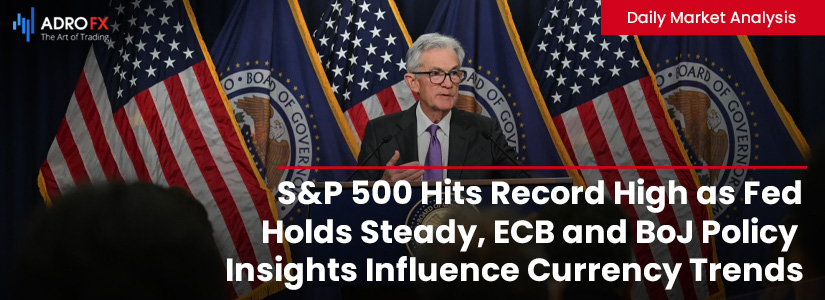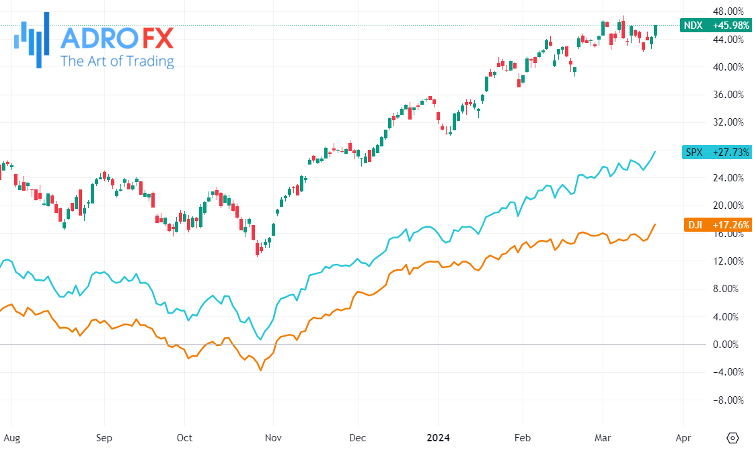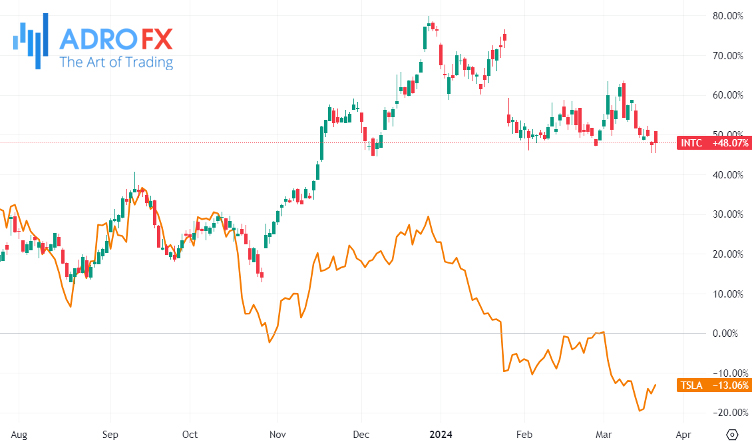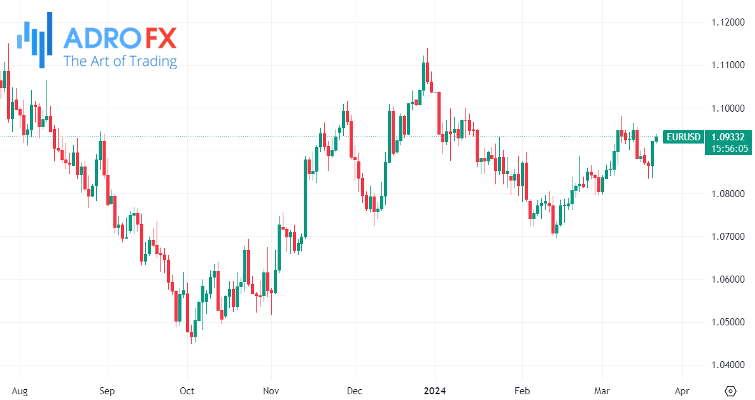S&P 500 Hits Record High as Fed Holds Steady, ECB and BoJ Policy Insights Influence Currency Trends | Daily Market Analysis

Key events:
- Switzerland - SNB Interest Rate Decision (Q1)
- UK - BoE Interest Rate Decision (Mar)
- USA - Initial Jobless Claims
- USA - Philadelphia Fed Manufacturing Index (Mar)
- USA - S&P Global US Manufacturing PMI (Mar)
- USA - S&P Global Services PMI (Mar)
- USA - Existing Home Sales (Feb)
On Wednesday, the S&P 500 surged past the 5,200 mark for the first time, buoyed by the Federal Reserve's decision to maintain interest rates and its indication of three potential rate cuts this year. This move alleviated concerns that rising inflation would prompt the central bank to adopt a less accommodative stance.
The S&P 500 climbed 0.7% to reach 5,213.31, with the NASDAQ Composite up by 1% and the Dow Jones Industrial Average rising 0.3% or 282 points.

The Federal Reserve opted to keep interest rates steady and projected its benchmark rate to decrease to 4.6% next year, signaling three potential rate cuts in 2024, consistent with its previous projection in December.
Prior to the announcement, some apprehensions that increased inflationary pressures since the beginning of the year would compel the Fed to reconsider its stance on rate cuts. However, the Fed seems confident in its inflation-fighting strategy, though it did adjust its forecasts for rate cuts beyond 2024. For 2025 and 2026, Fed members anticipate rates to decline to 3.9% and 3.1%, respectively, up from earlier estimates of 3.6% and 2.9%.
The unaltered rate trajectory for 2024 led to a significant drop in Treasury yields, with the 2-year Treasury yield falling to 4.64%, down 4.9 basis points.
In corporate developments, Intel (NASDAQ: INTC) saw its stock dip by 0.5% despite the Biden administration's announcement of nearly $20 billion in grants and loans to boost the company's chip production capacity.

On the other hand, Tesla (NASDAQ: TSLA) witnessed a more than 2% increase in its stock price after confirming plans to raise prices for China-produced Model Y vehicles starting April 1. This decision marks a departure from the series of price reductions implemented by Tesla throughout 2023, signaling a strategic shift.
The EUR/USD continues its upward trajectory for the second consecutive session, following the US Federal Reserve's decision to maintain its benchmark rates at 5.5% during Wednesday's policy meeting. As a result, the pair edges closer to the 1.0930 mark during Thursday's Asian trading hours.

On the European front, Christine Lagarde, President of the European Central Bank, expressed concerns regarding lower wage inflation, a factor previously highlighted by the ECB as crucial in determining future policy directions.
In addition, Luis de Guindos, Vice-President of the ECB, advised against premature action, advocating for a cautious approach due to persistently high service inflation. Supporting this stance, ECB policymaker Pablo Hernandez de Cos hinted at the possibility of rate cuts in June, depending on incoming data.
During Thursday's Asian session, the Japanese Yen garners some buying interest and rebounds from recent heavy losses, alleviating its decline to its lowest level since November 2023 against the US Dollar. Reports suggesting that the Bank of Japan is considering a rate hike in July, coupled with upbeat economic data from Japan, provide support to the JPY. Speculations about potential intervention by Japanese authorities to curb further weakness in the domestic currency, combined with a post-FOMC selling bias on the USD, exert significant downward pressure on the USD/JPY pair.

Moreover, the USD Index, which measures the Greenback against a basket of currencies, drops to a one-week low in response to the Federal Reserve's decision.
Meanwhile, the BoJ's recent indications of maintaining accommodative financial conditions without offering clear guidance on future policy steps or the pace of policy normalization, alongside the prevailing risk-on sentiment, may deter traders from aggressively betting on the safe-haven JPY. This scenario supports the possibility of dip-buying emerging around the USD/JPY pair.
During Thursday's Asian session, the USD/CAD continues its downward trend, nearing the 1.3470 level, marking its second consecutive day of losses. The Canadian Dollar appears to have found support from the uptick in crude oil prices.

WTI crude oil prices have seen a rise, approaching around $81.70 at the time of this report. This increase likely strengthened the CAD, especially as the US Energy Information Administration (EIA) reported a second consecutive week of declines in crude inventories, indicating robust demand from the world's largest oil consumer.
Meanwhile, the Bank of Canada's Governing Council is contemplating potential rate cuts in 2024, should economic conditions align with forecasts. However, internal disagreements persist regarding the timing of such cuts and the risks associated with inflation. Governor Tiff Macklem remains cautious about immediate rate adjustments, expressing concerns over underlying inflationary pressures.









